Abstract
This study compared capitalist and socialist countries in measures of the physical quality of life (PQL), taking into account the level of economic development. The World Bank was the principal source of statistical data for 123 countries (97 per cent of the world's population). PQL variables included: indicators of health, health services, and nutrition (infant mortality rate, child death rate, life expectancy, population per physician, population per nursing person, and daily per capita calorie supply); measures of education (adult literacy rate, enrollment in secondary education, and enrollment in higher education); and a composite PQL index. Capitalist countries fell across the entire range of economic development (measured by gross national product per capita), while the socialist countries appeared at the low-income, lower-middle-income, and upper-middle-income levels. All PQL measures improved as economic development increased. In 28 of 30 comparisons between countries at similar levels of economic development, socialist countries showed more favorable PQL outcomes.
Full text
PDF
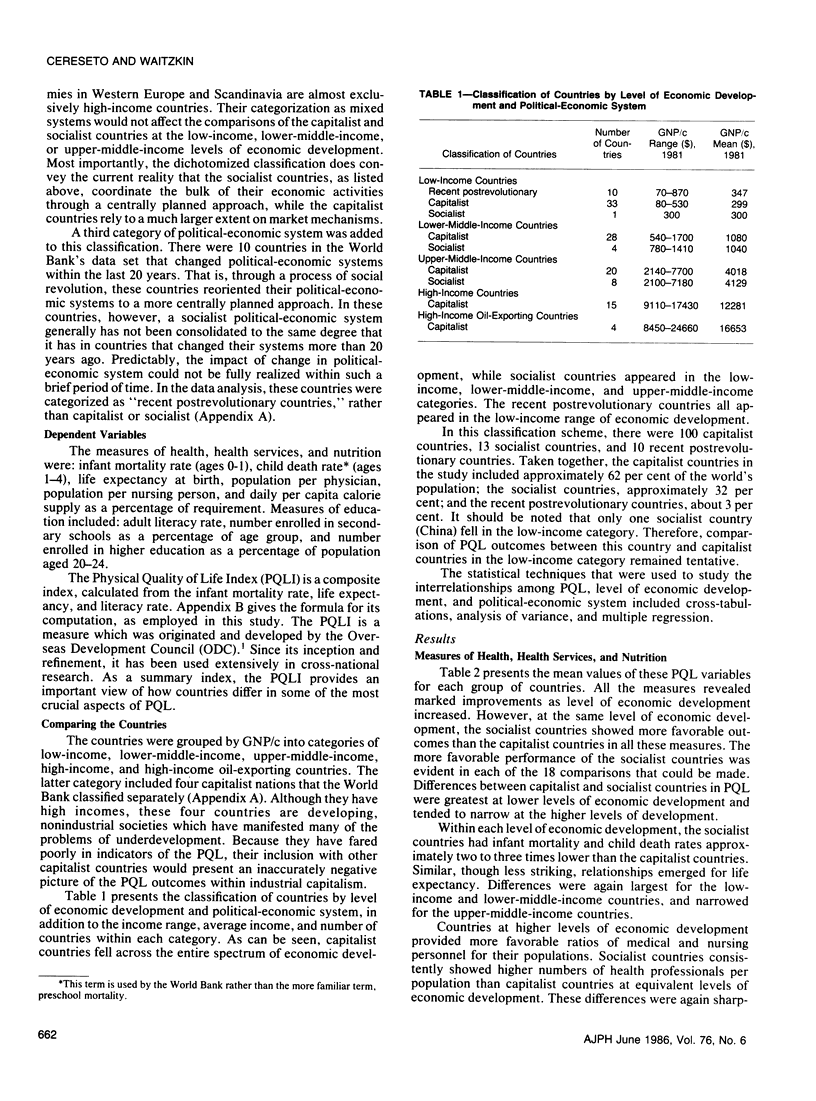
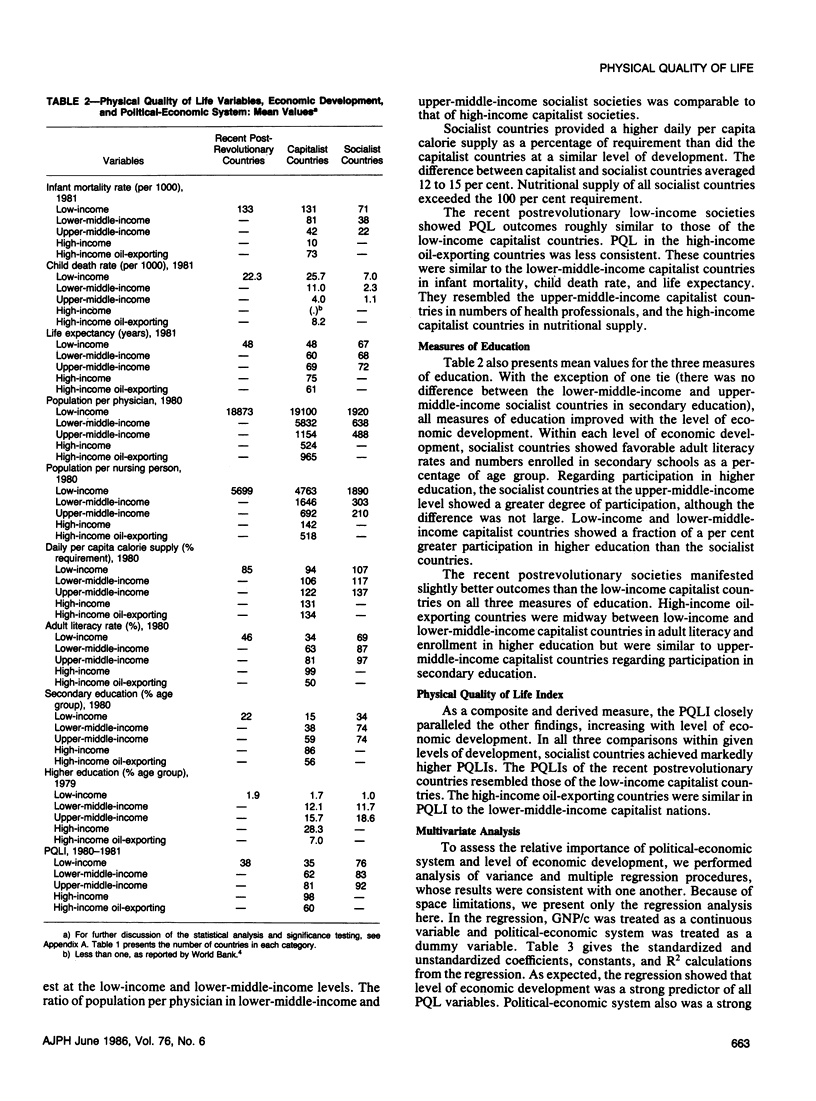
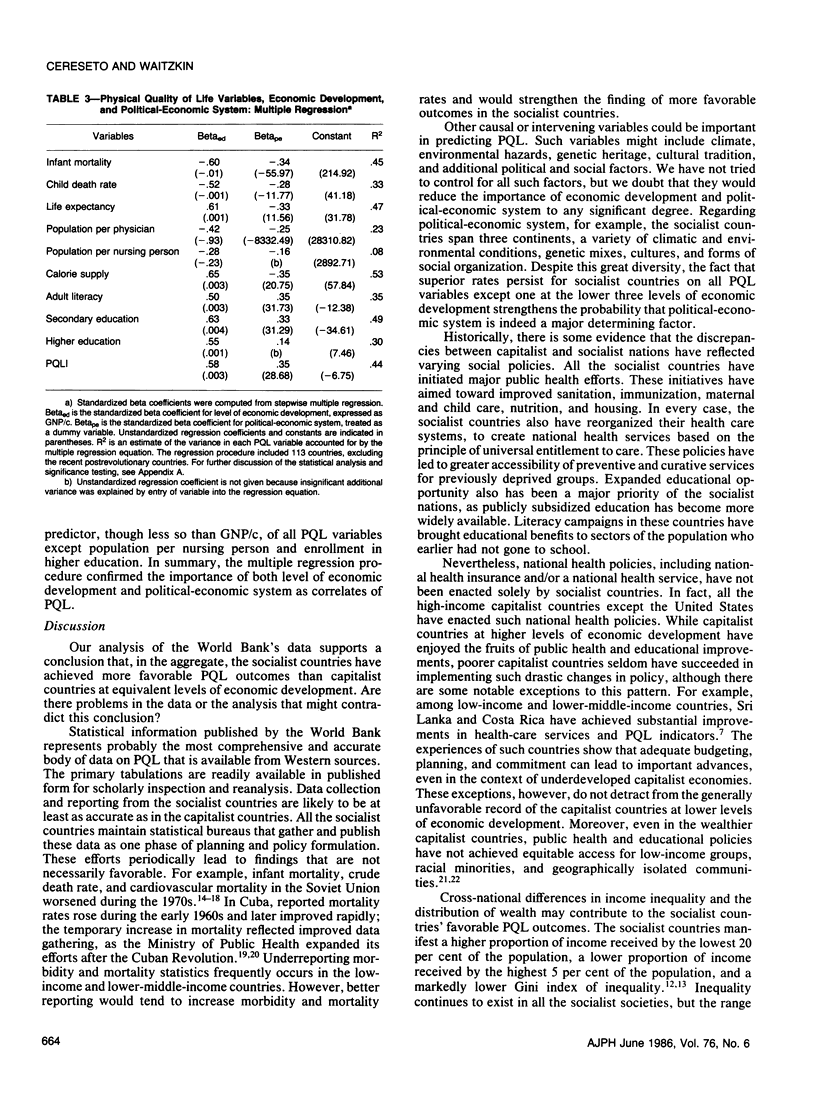
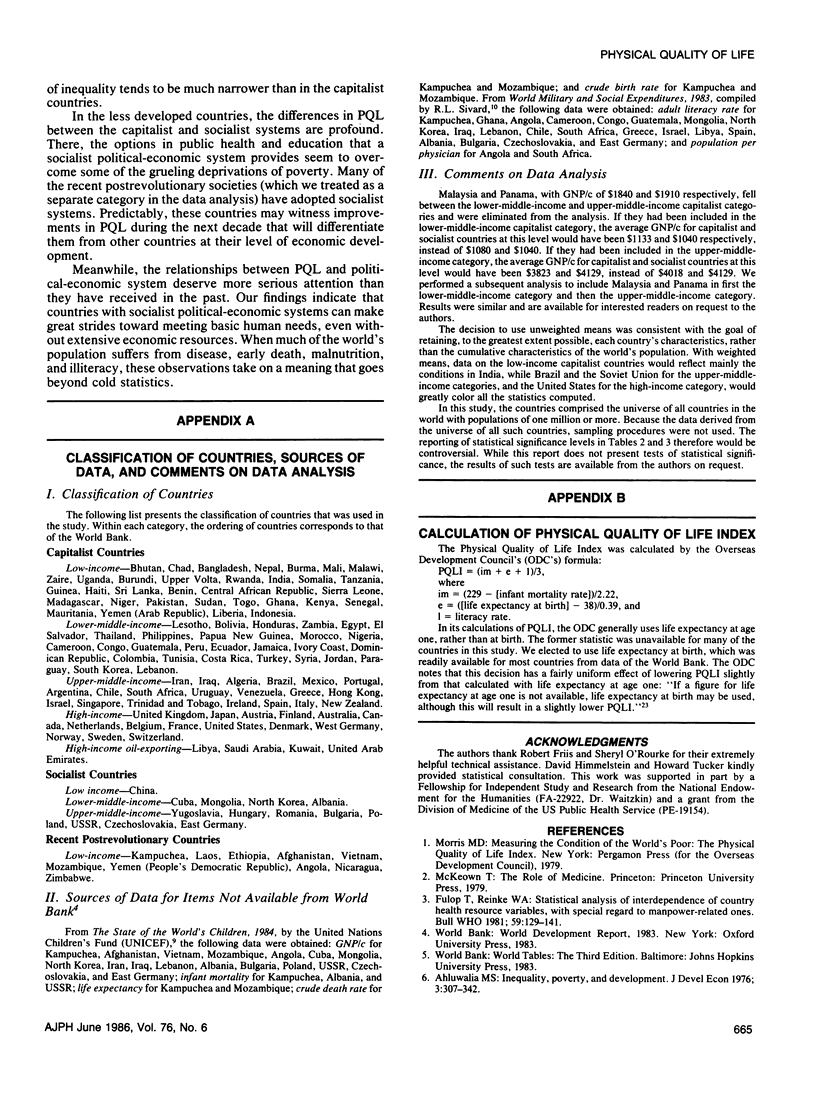
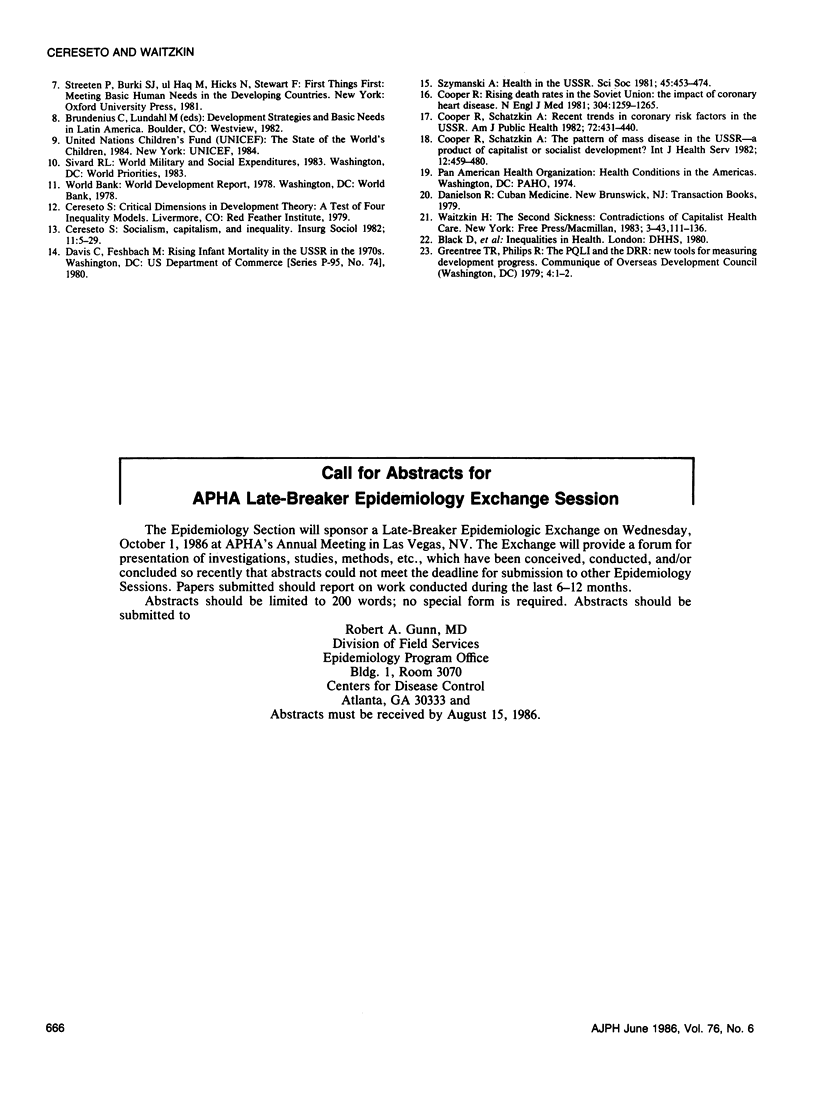
Selected References
These references are in PubMed. This may not be the complete list of references from this article.
- Ahluwalia M. S. Inequality, poverty and development. J Dev Econ. 1976 Dec;3(4):307–342. doi: 10.1016/0304-3878(76)90027-4. [DOI] [PubMed] [Google Scholar]
- Cooper R. Rising death rates in the Soviet Union: the impact of coronary heart disease. N Engl J Med. 1981 May 21;304(21):1259–1265. doi: 10.1056/NEJM198105213042103. [DOI] [PubMed] [Google Scholar]
- Cooper R., Schatzkin A. Recent trends in coronary risk factors in the USSR. Am J Public Health. 1982 May;72(5):431–440. doi: 10.2105/ajph.72.5.431. [DOI] [PMC free article] [PubMed] [Google Scholar]
- Cooper R., Schatzkin A. The pattern of mass disease in the U.S.S.R.: a product of socialist or capitalist development? Int J Health Serv. 1982;12(3):459–480. doi: 10.2190/JN6R-DBEU-PABL-N5R8. [DOI] [PubMed] [Google Scholar]
- Fülöp T., Reinke W. A. Statistical analysis of interdependence of country health resource variables, with special regard to manpower-related ones. Bull World Health Organ. 1981;59(1):129–141. [PMC free article] [PubMed] [Google Scholar]
- Szymanski A. On the uses of disinformation to legitimize the revival of the cold war: health in the U.S.S.R. Sci Soc. 1981;45(4):453–474. [PubMed] [Google Scholar]


